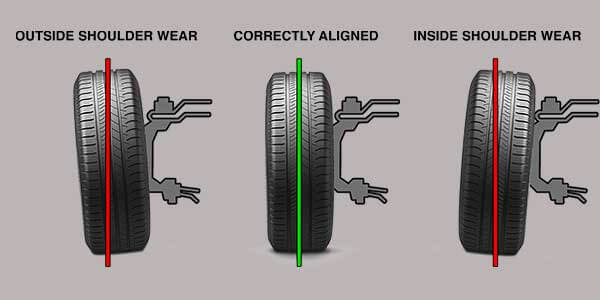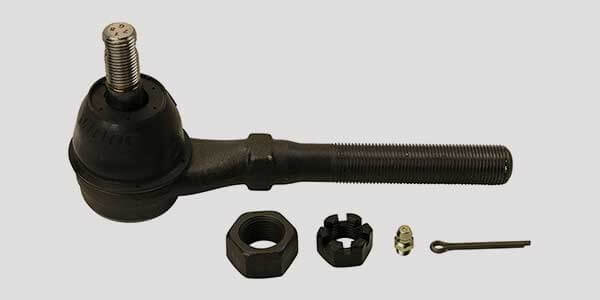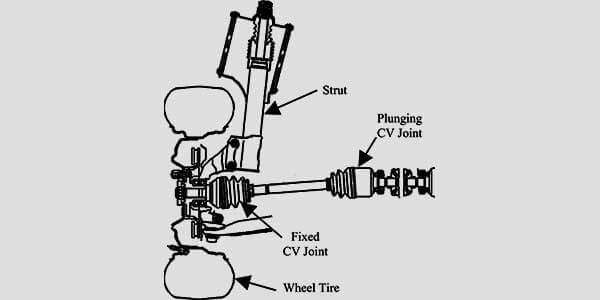Hearing weird noises coming from your car is never a pleasant thing, and isolating and identifying the problem may be extremely difficult. Fortunately, when the car makes noise when turning right but not left (or vice versa), the issue is more easily diagnosed.
If your Car Makes noise when turning right but not left, the problem is most likely due to a problem with the steering system, such as worn-out tie rods or a damaged rack and pinion, or a problem with the suspension system, such as damaged, loose, or worn-out struts and shocks.
Every driver hates unusual noises coming from their vehicle. If you hear unexpected noises while turning left or right, you may be concerned about your safety as well as the expense of repairs. While many of the issues that create turning noises can result in costly repairs, you may be able to save time and money by determining the source of the sound.
If you’re wondering why your car makes a noise when turning right but not left, you’ve come to the perfect spot. The cars-care.net team obtained all information from automobile experts on hand to keep you safe and educated on the road.
Why My Car Does Makes Noise When Turning Right But Not Left?
Depending on the sort of noise, your automobile creating noise when turning right but not left might be caused by a variety of difficulties, ranging from power steering system troubles to worn-out suspension components.
The steering and suspension systems are critical to the operation and control of your vehicle. To minimize any damage and keep your car safe, you must identify and treat any faults as soon as possible.
How Does The Mechanical Breakdown Work?
When you turn your vehicle to the right, the weight moves to the vehicle’s left side. This puts more strain on the steering and suspension components on that side of the vehicle. If these parts are broken or inadequately lubricated, you may hear a variety of unusual noises.
Identify the problem
The sort of sound you hear and the rate at which you hear it might help you pinpoint the source of the problem.
Although hearing noises while driving might be frightening, sounds can help you uncover problems that would otherwise be invisible. When attempting to determine the source of noise in your vehicle, you must pay great attention to the sort of sound and its frequency.
Although hearing noises while driving might be frightening, sounds can help you uncover problems that would otherwise be invisible. When attempting to determine the source of noise in your vehicle, pay special attention to the sort of sound and the direction from which it originates.
Is The Noise Affected By Speed?
One factor to consider is the speed with which you hear the sounds. Does that happen while you’re driving fast? Or is it more noticeable at slower speeds?
If you hear the noise when traveling at high speeds and turning, it’s likely that you have a faulty wheel bearing.
While rotating, the steering wheel makes a noise.
Is your automobile making a noise when you spin the steering wheel? And, if so, does it happen while you’re sitting, moving, or doing both?
If the noise is coming from the steering wheel, you may have a faulty steering column bearing or boot. Other steering system components, such as tie rods, sway bars, and steering knuckles, can also fail and generate turning sounds. To effectively diagnose the problem, take note of the conditions when you hear the noise.
Car Makes a Noise When Turning Right but Not Left: Possible Causes
Tie rods that are worn out or broken are one of the most prevalent causes of a car generating noise when turning right but not left. Tie rods link the steering wheel to the wheels and keep them aligned.
If they are worn out, your vehicle may produce noise when turning. You will need to repair the tie rods to correct this.
Another major source of this issue is faulty wheel bearings. Wheel bearings allow wheels to rotate smoothly and quietly. If they are damaged, your vehicle may produce noise when turning. You will need to replace the wheel bearings to correct this.
Another typical issue that might cause your automobile to produce noise while turning right but not left is suspension struts.
If your suspension struts are worn or broken, they will be unable to hold the weight of your vehicle, causing it to bounce around when driving. This may be remedied by changing the suspension struts.
Finally, a broken or worn-out CV joint is a typical source of this issue. A CV joint is what permits the wheels on your automobile to turn smoothly.
If this joint is broken or worn out, your vehicle may produce noise when turning right but not left. To correct this, take your vehicle to a professional and get the CV joint replaced.
As you can see, a variety of factors might cause your automobile to generate noise when turning right but not left. However, if you know what to look for, it is typically rather simple to resolve this issue.
If this joint is broken or worn out, your vehicle may produce noise when turning right but not left. To correct this, take your vehicle to a professional and get the CV joint replaced.
As you can see, a variety of factors might cause your automobile to generate noise when turning right but not left. However, if you know what to look for, it is typically rather simple to resolve this issue.
To Test Suspension Struts
Suspension struts are a vital component of a vehicle’s suspension system, and they must be examined on a regular basis to ensure that they are in excellent working order.
There are several methods for testing suspension struts, but the most popular and successful is to use of a strut tester.
A strut tester is specialized equipment used to evaluate the compressional and rebound strength of a strut. It is simple to use and can be used to evaluate both new and old struts.
Simply lay the strut tester on the ground close to the wheel that needs to be tested. Then, with your foot, press down on the top of the tester until the indicator reaches the appropriate reading.
The signal should remain at the same level if the strut is functioning properly. The indication will go up or down if the strut is not operating properly.
If the indicator rises, it indicates that the strut is not providing adequate support and should be replaced. If the indicator falls, it indicates that the strut is giving too much support and should be corrected.
To Replace Suspension Struts

Suspension struts are a vital component of a vehicle’s suspension system and must be changed when they wear out or get damaged. There are several methods for replacing suspension struts, but the most popular and efficient method is to use a strut spring compressor.
A strut spring compressor is a specialized tool for compressing the springs on a vehicle’s suspension struts. This makes removing the old strut and installing the new one easier.
Simply lay the strut spring compressor on the ground close to the wheel that has to be replaced. Then, with your foot, press down on the top of the compressor until the indicator reaches the required reading.
After the spring has been compressed, you may remove the old strut and replace it. To avoid harming the new strut, make sure you follow the directions that came with the compressor.
Wheel Alignment
You may evaluate your wheel alignment at home in a variety of methods. The first method is to park your automobile on a level area and observe whether or not it rolls in a straight path. If it doesn’t, your wheels are probably out of alignment.
Another approach to check your wheel alignment is to measure the distance between the ground and the center of your tires with a tape measure. If the distance from one side to the other differs, your wheels are most likely out of alignment.
Finally, you may take your vehicle for a test drive. Take note of how it feels when you round corners. If your vehicle appears to be tugging to one side or the other, your wheels are most likely out of alignment.
To Fix the Wheel Alignment

You can adjust your wheel alignment at home in a variety of methods. The first option is to change your own wheel alignment. Loosen the lug nuts on your wheels and then spin them to the left or right until they are in line with the rest of your vehicle.
Another option is to take your vehicle to a technician or tire shop and have them align your wheels for you. This is typically the best option because they will have the required equipment and knowledge to correctly align your wheels.
Finally, an alignment kit can be purchased from a local or online merchant. These kits often provide instructions for correctly aligning your wheels.
How to Inspect Wheel Bearings?

Wheel bearings are another critical safety component of your vehicle. Wheel bearings keep the wheels linked to the vehicle while allowing them to rotate freely. They might wear out and need to be replaced over time.
How to Change Wheel Bearings?
Replacing a wheel bearing is not a difficult process, but it is vital to follow the precise technique. To begin, jack up the car and remove the wheel.
The brake caliper must then be removed in order to obtain access to the axle nut. After removing the axle nut, the hub assembly may be pushed away from the spindle. The old bearings may now be removed and replaced with new ones.
Tie Rod Testing Procedure
Tie rods are one of the most crucial safety components in your car. Tie rods link the steering wheel to the wheels and assist in keeping your vehicle straight. They might wear out and need to be replaced over time.
If you find your car swerving to one side or the other, or if the steering wheel feels loose, it’s time to repair your tie rods.
To begin testing tie rods, look for any evident damage. Then, grasp each tire at 12 and 6 p.m. and try to move it back and forth. If there is any play, the tie rods should be replaced.
How to Change Tie Rod?

If you’ve decided it’s time to replace your tie rods, the procedure is actually rather straightforward. You’ll need a few tools, like a wrench and socket set, but other than that, it’s a simple job.
To begin, remove the lug nuts on the afflicted wheel. Then jack up the automobile and take the wheel off. Locate the tie rod end at the steering knuckle next. A nut will be keeping it in place; use the wrench to release it.
You should be able to pull the tie rod out of the steering knuckle once the nut is loose. At this stage, you may compare the old and new tie rods to ensure they’re similar. Install if everything appears to be in order.
Tighten the nut that is holding it in place, then replace the wheel and lower the car. Once the vehicle is out on the road, check the steering to ensure it is tight and responsive. If everything seems right, you’re good to go!
There are several methods for testing a CV joint. One method is to inspect the boot for grease leaks. Another method is to inspect the CV joint for signs of wear. If there is any damage, it must be replaced.
A “cv boot clamp test” is another test that may be conducted. This test is performed by removing the CV joint from the axle and then moving the axle back and forth. If there is any movement, the CV joint must be replaced.
How to Perform a CV Joint Test?
There are several methods for testing a CV joint. One method is to inspect the boot for grease leaks. Another method is to inspect the CV joint for signs of wear. If there is any damage, it must be replaced.
A “cv boot clamp test” is another test that may be conducted. This test is performed by removing the CV joint from the axle and then moving the axle back and forth. If there is any movement, the CV joint must be replaced.
How to Change a CV Joint?

The CV joint is placed at the axle’s end and allows the axle to flex when the suspension rises and falls. The CV joint might wear out and need to be changed over time.
To replace the CV joint, the axle must first be removed from the vehicle. Once the axle has been removed, the old CV joint may be unscrewed from the end. After that, the replacement CV joint must be put into position. The axle may then be replaced in the car.
What is the cost of repairing a turning noise?
Depending on the reason for the noise, repair prices might range from less than $20 for a bottle of fresh power steering fluid to more than $1,200 for a replacement rack and pinion.
For components and labor, the majority of these projects will cost between $100 and $500. You may save money on labor by completing these repairs yourself, but remember to follow your manufacturer’s torque recommendations when installing new components, and don’t forget to align the vehicle afterward.
Conclusion
While there are several issues that might cause your car makes noise when turning right but not left, you must have them checked out and corrected as soon as feasible by an expert mechanic. The more you ignore an issue, the worse it gets.
You might want to see this:
- Symptoms of Engine Damage from Overheating
- Tips for Preventing Squeaking Noise While Driving But Not Brakes Applied
- Clicking Noise From Front Wheel When Driving
- Car Makes Rattling Noise When Accelerating
Frequently Asked Questions:
What are the major reasons why vehicles turning?
Many factors can contribute to turning noise. However, problems with suspension or steering system components, such as worn-out shocks or struts, a broken steering column bearing, and low or tainted power steering fluid, are the most typical causes of these troubles.
What Is the Life Expectancy of CV Joints?
A CV joint’s maximum life is 70,000 to 130,000 miles, and professionals recommend that they be examined on a regular basis.
Is it possible for a bad suspension to damage my steering wheel?
Vibration from a faulty suspension might harm your steering wheel. While driving, this may be highly irritating and painful. If not repaired, it can potentially cause long-term harm to the steering wheel.
